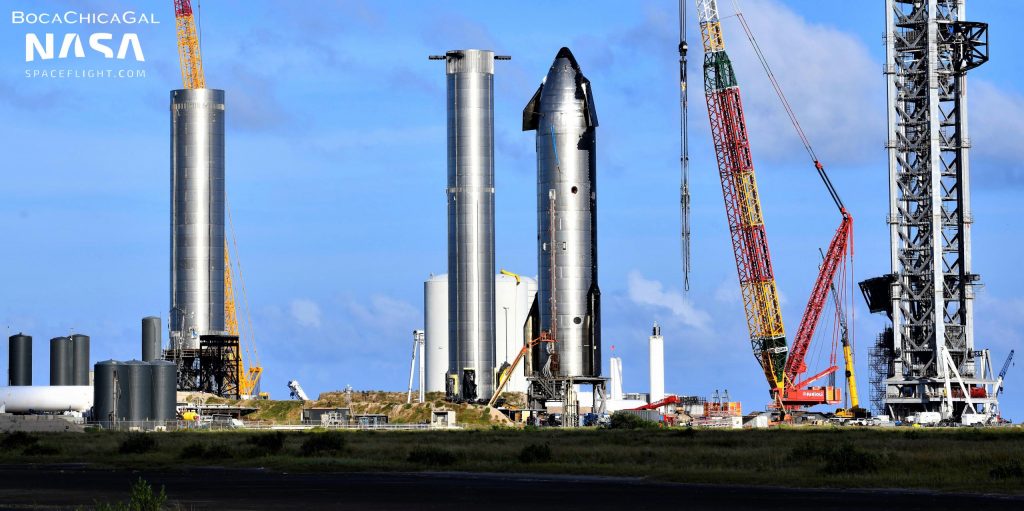Not long after Elon Musk confirmed plans to add three more Raptor engines to Starship and stretch the upper stage’s propellant tanks, the SpaceX CEO has confirmed one of several smaller design changes planned in the interim.
On January 3rd, Musk confirmed that SpaceX is entirely relocating one of two secondary ‘header’ tanks that Starships use to store landing propellant. A graphic sketched on the side of future Starship rings further revealed plans to tweak most of the subsections that SpaceX stacks to form a Starship, complementing an upgraded nosecone design. Finally, another design change was spotted on hardware that will eventually become part of the first full-thrust Super Heavy booster.
According to Musk, starting with Starship 24 (S24), which is likely the next ship SpaceX will complete, the methane (fuel) header tank will be relocated from Starship’s common dome to its nosecone. From the start, Starship’s oxygen header tank has been located in the very tip of the nose – placed in such an inconvenient location for the sole purpose of shifting Starship’s center of gravity forward. Now, the methane header tank will join it in the nose, with the obvious explanation being a need to shift that center of gravity even further forward. It’s possible that this change was planned before SpaceX realized the performance benefits of a stretched, nine-engine Starship, but it could also be a preemptive modification meant to counteract the added weight of three more Raptor engines and longer tanks.
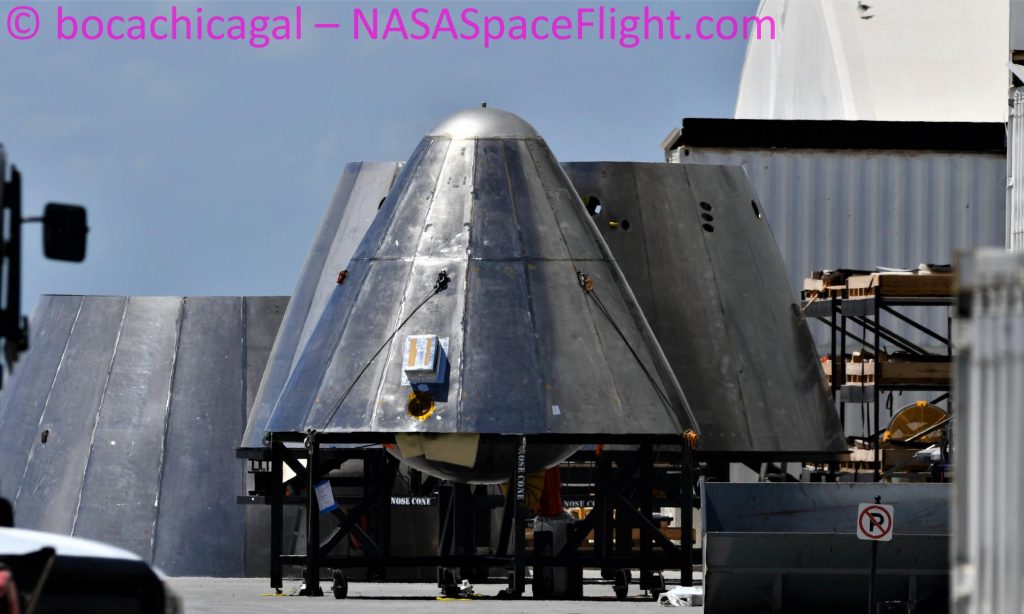
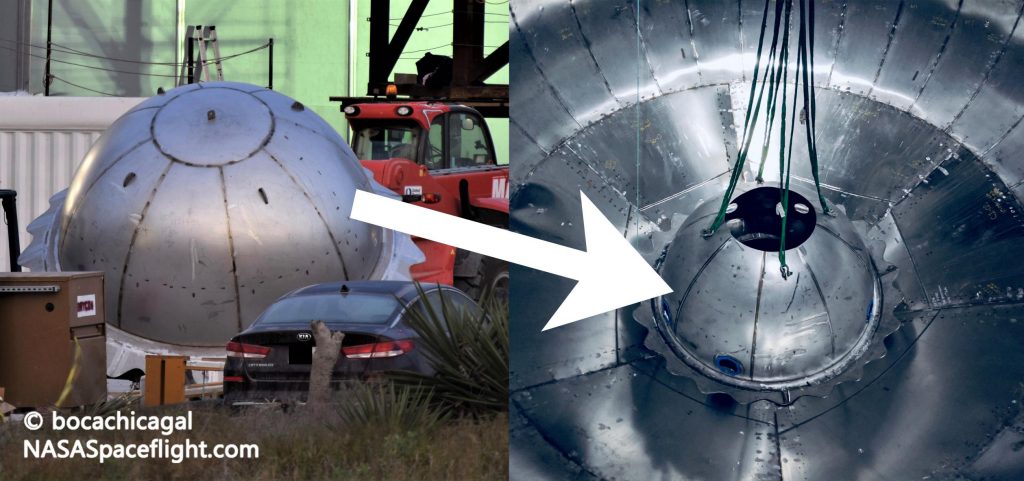
Musk’s confirmation of the methane header tank’s relocation came just a few days after a drawing on the side of a Starship section further confirmed several more minor design changes. Starbase ‘hieroglyphics’ are not uncommon, as SpaceX engineers and technicians have often used hardware itself as a sort of whiteboard to sketch out plans and literally annotate ongoing work. This particular drawing was exceptionally detailed and useful, effectively showing exactly how Starship’s design will change beginning with Ship 24. The changes are simple enough: in essence, SpaceX will be adding an extra ring to several Starship ‘sections.’ For current ships, six distinct sections are stacked to form the Starship’s cylindrical tankage and hull.
It takes another five stacked sections to complete the current nosecone design. Counting the nose as one, it takes about seven stack operations to fully assemble the basic structure of a Starship. With the design changes sketched out on a Starship S24 ring and an upgraded nosecone that will debut on the same ship, fully assembling a nosecone will now take two or three stacks (down from five) and fully assembling a Starship will take six stacks (down from seven). While obviously not a major redesign, the changes will significantly simplify (and thus potentially speed up) Starship assembly, which will have additional positive follow-on impacts on plumbing, wiring, and heat shield installation.
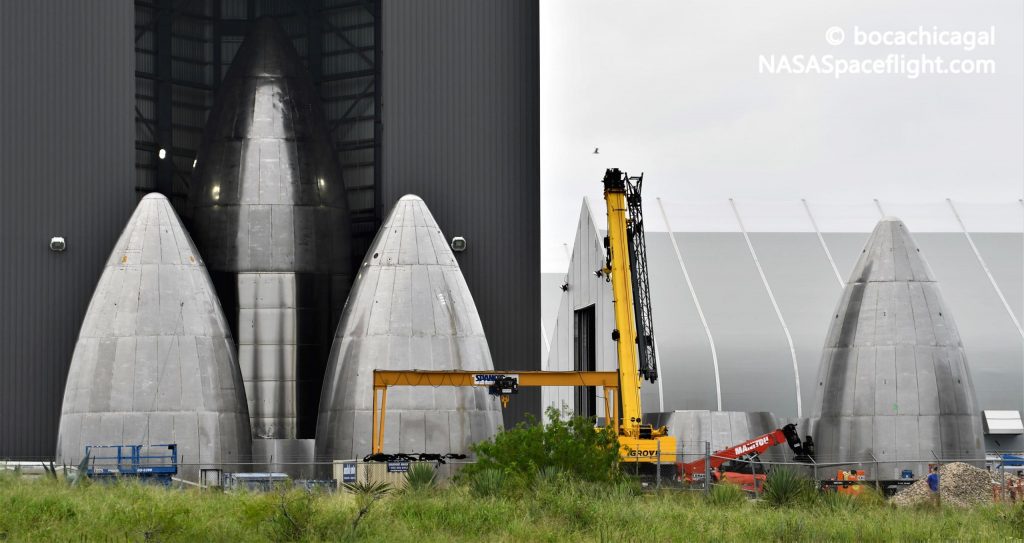
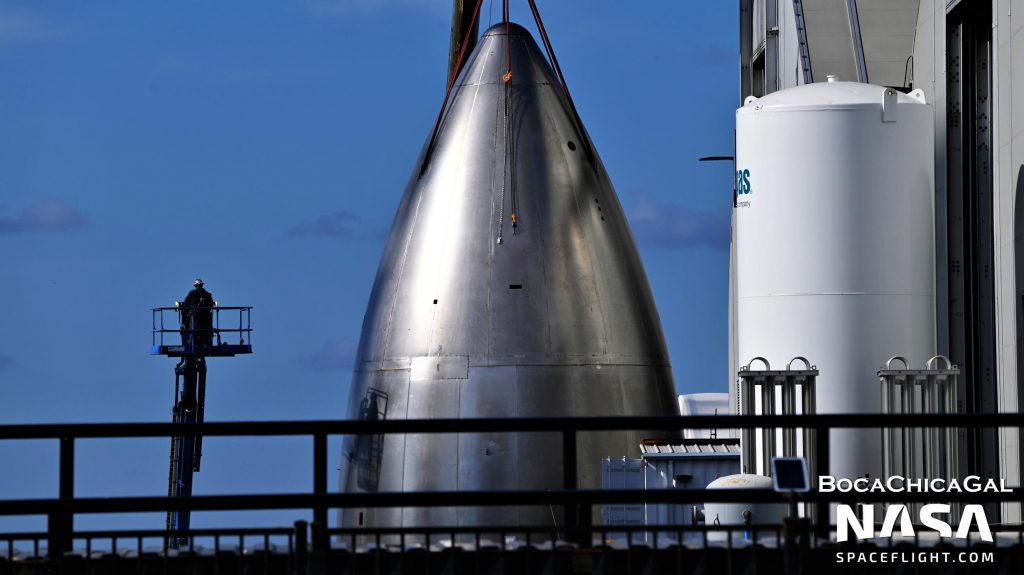
There’s good reason to believe that some of the changes – especially expanding Starship’s nose barrel from four to five rings tall – will end up being applied to Super Heavy, potentially reducing the number of booster ‘sections’ needed from nine to seven or eight. However, there are already signs of some weirder changes being made to Super Heavy’s design. On December 21st, a Super Heavy thrust dome – likely Booster 7’s – was sleeved with several steel rings as part of a now-routine process, partially completing the first 33-engine thrust section. However, instead of the usual aft barrel section comprised of three six-foot-tall (~1.82m) steel rings, this ‘sleeve’ was made up of four ~1.4m-tall rings – the first time in Starbase history that shorter rings have appeared on any hardware.
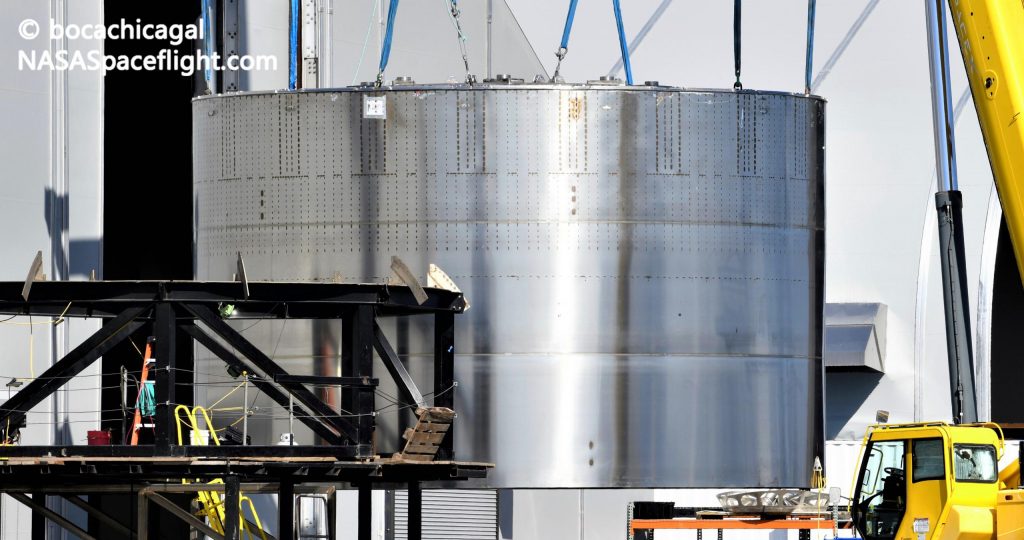
Unlike all the other changes described above, it’s entirely unclear what benefit SpaceX is getting from keeping a given ship or booster section the same height while adding more smaller rings to it – a process that will inherently increase the complexity and amount of work required to complete that section. Regardless, it’s clear that SpaceX is in the midst of a significant period of design revision that could see Ship 24 and Booster 7 debut with a wide range of upgrades and design changes in just a few months.

